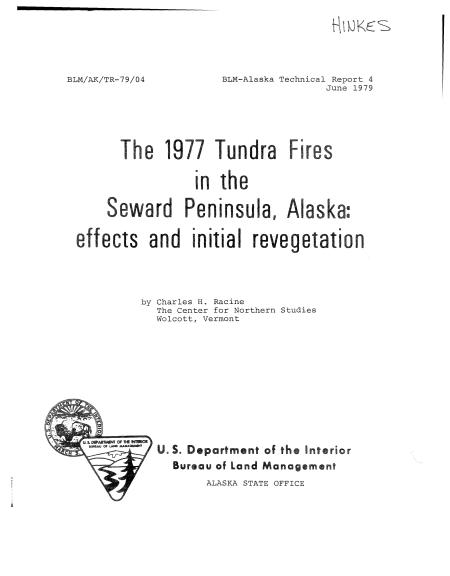The 1977 Tundra Fires in the Seward Peninsula, Alaska: Effects and Initial Revegetation

During summer 1977, wildfires burned extensive areas of maritime tundra in the Seward Peninsula. This study was initiated in July 1978 to determine the effects of these fires on tundra soils and vegetation and to establish permanent plots in which to monitor postfire succession. Fifteen 10 m x 1 m permanent belt transects were established at four different burn sites in the Seward Peninsula. Nine of these were located along a topographic transect on a hill where soils and vegetation had been quantitatively sampled in 1973, thereby providing pre-fire comparisons. Two other sample sites were located in a 1971 tundra burn. Soil characteristics and plant density and cover were determined in or near each of the 150 1 m x 1 m quadrats.
Tundra burn patterns were generally patchy, with unburned communities, unburned patches within burned communities, and in most areas of tussock-shrub tundra, less than one half of the accumulated organic soil layer was removed. Except where organics were removed, thaw depths were not greatly increased but unlike the pre-fire situation, after the fire, thaw depths reached into the mineral soils. Frost features were made m9re conspicuous, if not reactivated, and soil nutrient concentrations (K and P) increased locally. Revegetation in tussock-shrub tundra was rapid, mainly as a result of tussock resprouting, but was much slower in drier low shrub areas where organic soils were largely removed. Some of the implications of these results to vegetation changes, fire management policy, commercial reindeer herding, and off-road vehicle use are discussed.
